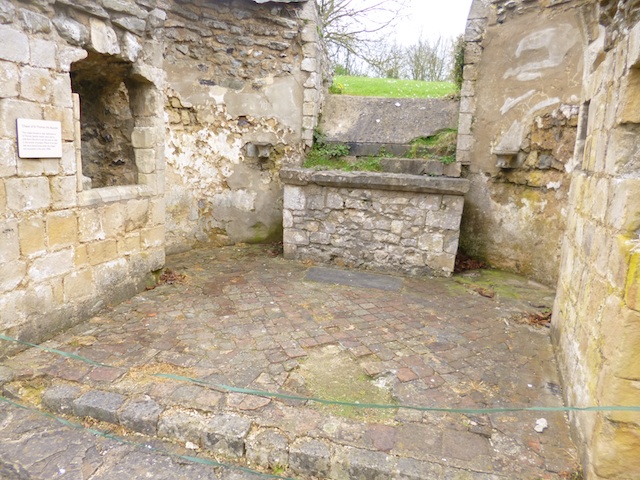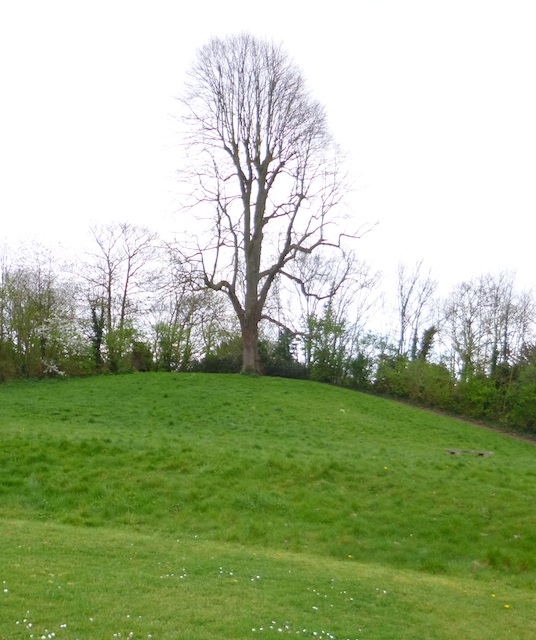St. Augustine's Abbey is located just outside the walls of Canterbury. It is one of the oldest monastic sites in England, founded by
St. Augustine of Canterbury. He was sent by
Pope Gregory the Great to reintroduce Catholicism in southern England (it had made some inroads before the Romans left). Augustine founded the monastery in 598. It became a great center of learning. After the Normans took over in 1066, the abbey was transformed into a typical Benedictine Abbey. Around this time, the abbey became known as St. Augustine's Abbey (you don't think he named it after himself, do you?). In 1538, the abbey was taken over by
King Henry VIII during the
Dissolution of the Monasteries. He turned into a royal palace in preparation for the arrival of wife number four, Anne of Cleves. The abbey saw little royal use after Henry VIII. It was rented out to noble families and slowly sold off over the years. By the mid-1800s interest grew in restoring the site. St. Augustine's College was built on the land, later becoming King's School. The surrounding land was slowly acquired through the 1900s and now
English Heritage manages the site.
 |
| St. Augustine's Abbey |
The entrance goes through a small museum with a collection of decorative bits found by archeologists.
 |
| Statue and gargoyles |
 |
| More statues and a cross |
 |
| Heads from statues |
The museum displays also explain life for people who lived here throughout the ages.
 |
| Medieval garb |
The abbey grounds are a mixture of the two abbeys (the original Saxon monastery and the Norman abbey) with a sprinkling of the royal palace. The north wall of the church's nave still stands. The base is from the Norman abbey but the brick top is from the royal palace.
 |
| Nave north wall |
 |
| The nave |
Adjoining the north nave wall is the remains of Ethelbert's Tower, one of the main towers of the church.
 |
| Ethelbert's Tower ruins |
Beyond the nave is the Crypt area, which served as the foundation for the central tower.
 |
| Crypt |
By the crypt several graves are marked off. In addition to the abbots who were buried here, many of the local kings were also buried at the abbey.
 |
| Graves |
 |
| Graves of Anglo-Saxon kings of Kent |
The base of a staircase shows where monks would go up the tower.
 |
| Stairs |
The crypt itself is accessible and contains some interesting floor tiles and the Chapel of St. Mary and the Angels, one of the earliest bits of the site.
 |
| More of the crypt |
 |
| Floor tiles |
 |
| Chapel of St. Mary and the Angels |
 |
| View from the chapel |
A side chapel in the crypt was dedicated to St. Thomas and the altar is still in reasonable shape.
 |
| Altar of St. Thomas |
To the north of the church is where the cloister and various domestic buildings of the monastery were located. The cloister was a small square green surrounded by a covered walkway. The walkway provided access to the various rooms of the monastery, such as the refectory (where the monks ate) and the chapter house (where the monks met for daily instruction, including the reading of a chapter from St. Benedict's Rule (hence the name "Chapter" house)).
 |
| Cloister area |
 |
| King's School |
 |
| Norman doorway |
Beyond the monastery on the east end of the grounds is St. Pancras's Chapel, one of the Anglo-Saxon churches that was not integrated into the larger monastic church. The Normans used it as a cemetery chapel.
 |
| St. Pancras's Chapel |
Next to the chapel is a small mound that was probably the location of the Abbey's bell tower or campanile.
 |
| Campanile Mound |
The abbey is a fascinating place to visit and well worth the trip.
 |
| Abbey with Canterbury Cathedral tower in the distance |


























No comments:
Post a Comment